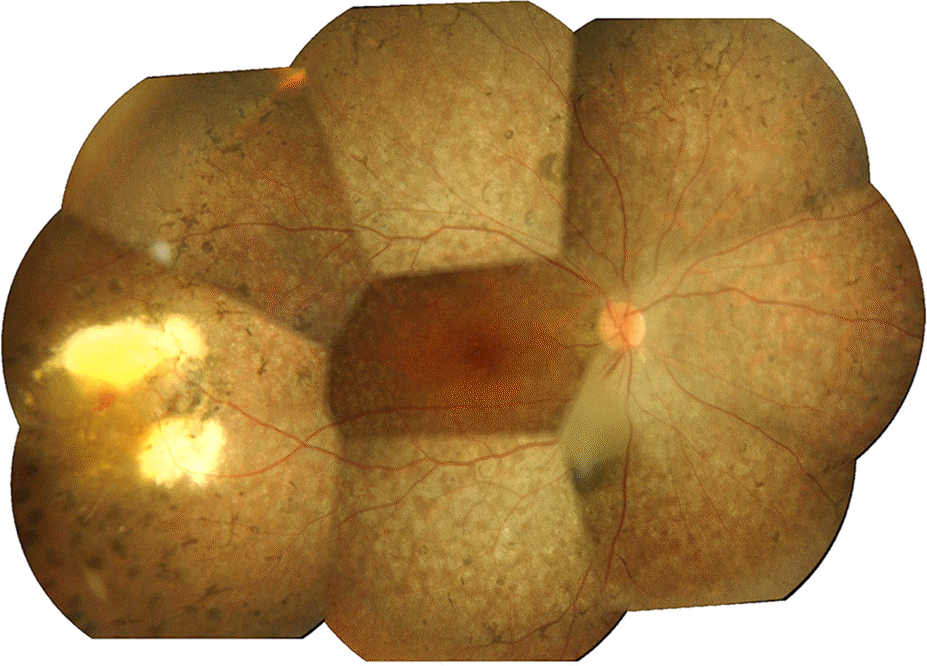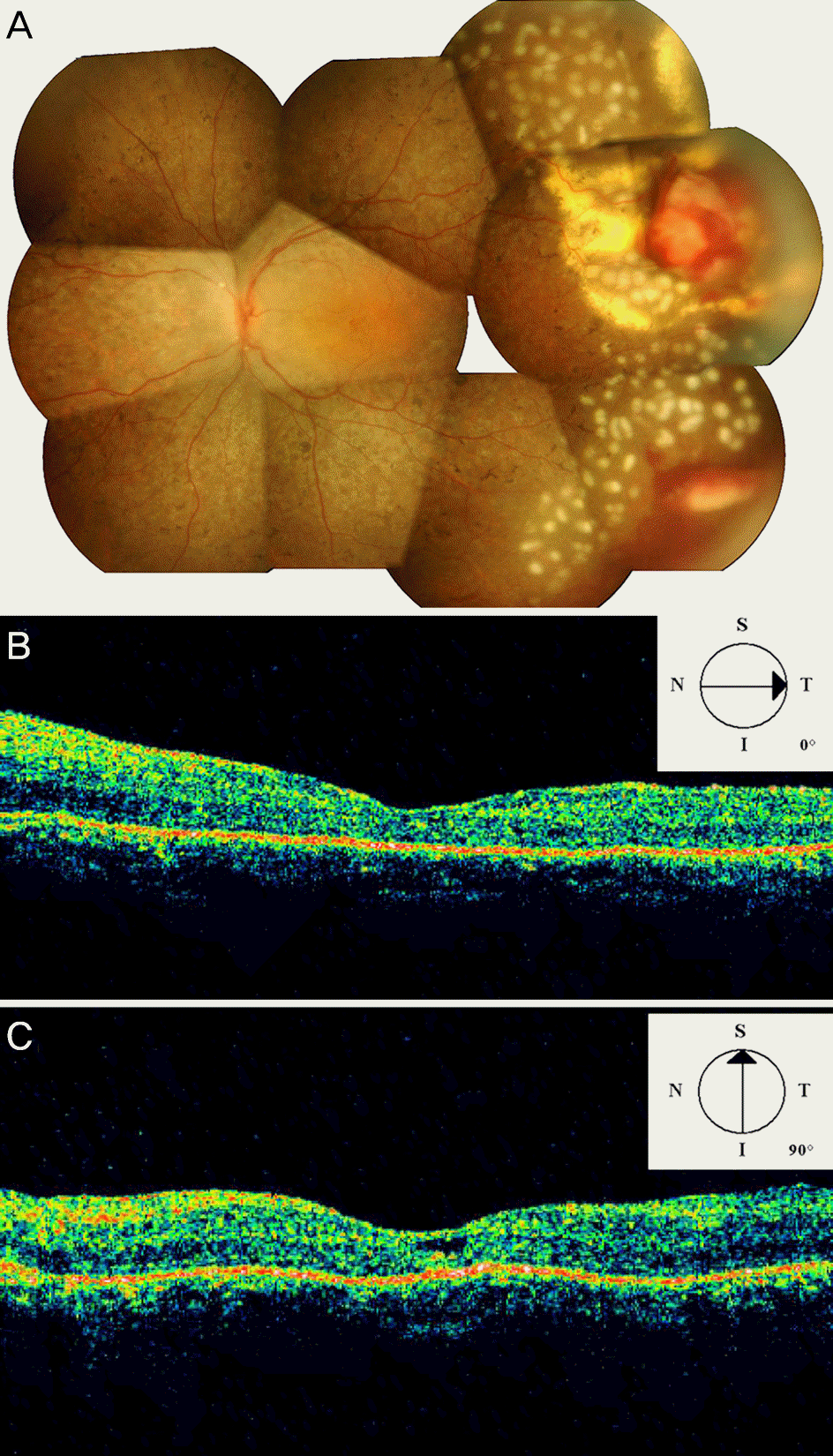Abstract
Purpose
For vitreous hemorrhage induced by coats-types retinitis pigmentosa, we report a case treated with pars plana vitrectomy and endolaser photocoagulation.
Case summary
A 24-year-old male who was diagnosed with retinitis pigmentosa in both eyes 6 years earlier presented with decreased visual acuity in his left eye for the last 7 months. Corrected visual acuity was measured at 0.06 in the left eye and fundus examination revealed a vitreous hemorrhage in the left eye as well as an exudative lesion in the right eye's peripheral retina, which suggested Coats-type retinitis pigmentosa. The left eye was treated with pars plana vitrectomy. After removal of the vitreous hemorrhage, endolaser photocoagulation was performed around the peripheral exudative lesion that caused the vitreous hemorrhage. One month later, the best-corrected visual acuity increased to 0.20 in the left eye, and there was an improvement in the vitreous hemorrhage and the exudative lesion.
Go to : 
References
1. Khan JA, Ide CH, Strickland MP. Coats’-type retinitis pigmentosa. Surv Ophthalmol. 1988; 32:317–32.

2. Kan E, Yilmaz T, Aydemir O, et al. Coats-like retinitis pigmentosa: Reports of three cases. Clin Ophthalmol. 2007; 1:193–8.
3. Sarao V, Veritti D, Prosperi R, et al. A case of CRB1-negative Coats-like retinitis pigmentosa. J AAPOS. 2013; 17:414–6.

4. Bansal S, Saha N, Woon WH. The management of “coats’ response” in a patient with x-linked retinitis pigmentosa-a case report. ISRN Surg. 2011; 2011. 970361.

Go to : 
 | Figure 1.Preoperative imagings of the left eye. (A, B) Fundus photograph and ultrasound B scan of the left eye showing a vitreous hemorrhage. (C) Fundus photograph of the left eye showing putative exudative lesions; the image is blurry because of the vitreous hemorrhage. (D, E) Optical coherence tomography scan of the left eye showing cystoid macular oedema. S = superior; N = nasal; I = inferior; T = temporal. |
 | Figure 2.Retinal photograph of the right eye showing a bone spicule pattern of pigmentation and peripheral exudates in the temporal retina accompanied by telangiectatic vessels. |
 | Figure 3.Initial fluorescein angiography of patient's both eye. (A, B) Fluorescein angiography of both eyes reveals hyper-fluorescence due to atrophy of the retinal pigment epithelium. (C) Late phase fluorescein angiography of left eye shows blocked fluorescence due to exudation accompanied by telangiectatic retinal vessels with leakage of the dye. |
 | Figure 4.Postoperative imagings of the left eye. (A) Retinal photograph of the left eye three days after surgery shows a vitreous hemorrhage-free, well-attached retina. The localized subretinal exudative lesion was surrounded by photocoagulation scarring. (B, C) Optical coherence tomography scan of the left eye demonstrates resolved cystoid macular oedema. S = superior; N = nasal; I = inferior; T = temporal. |




 PDF
PDF ePub
ePub Citation
Citation Print
Print


 XML Download
XML Download